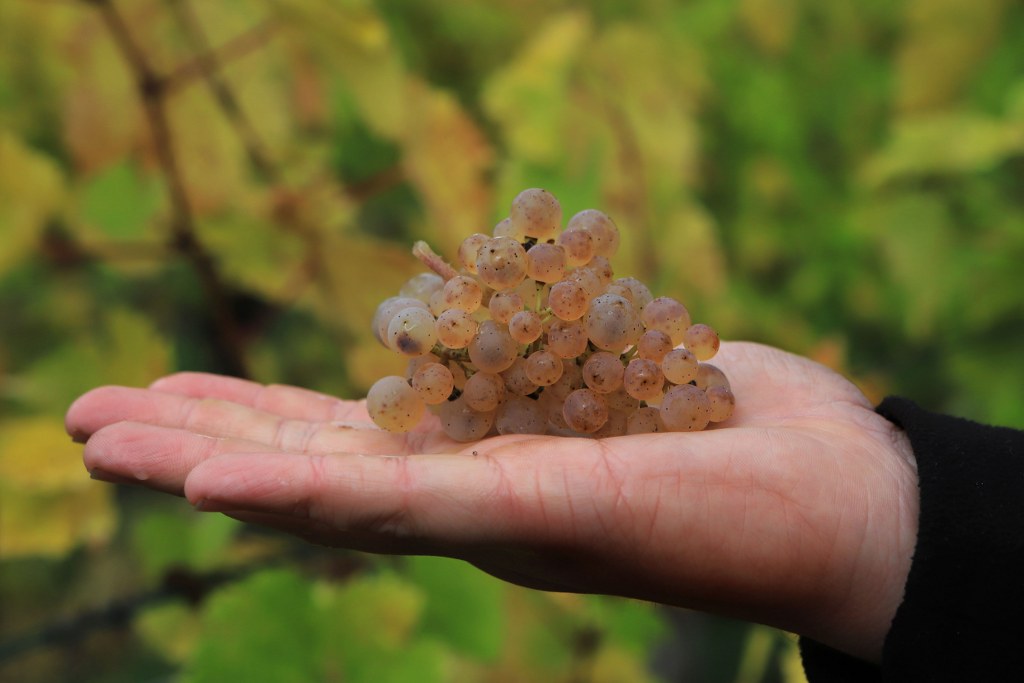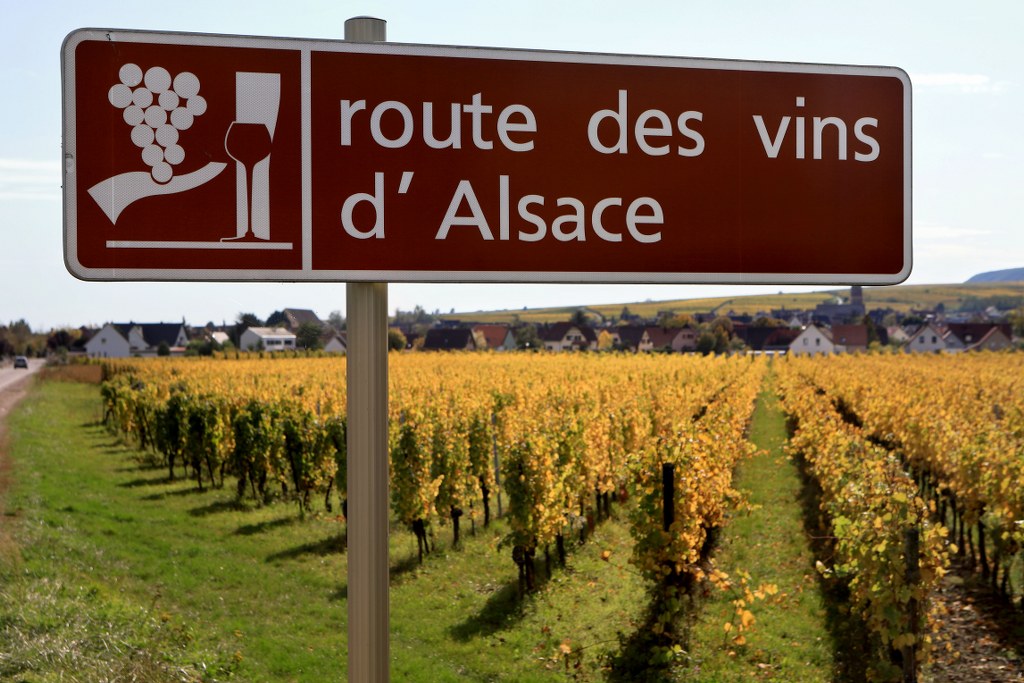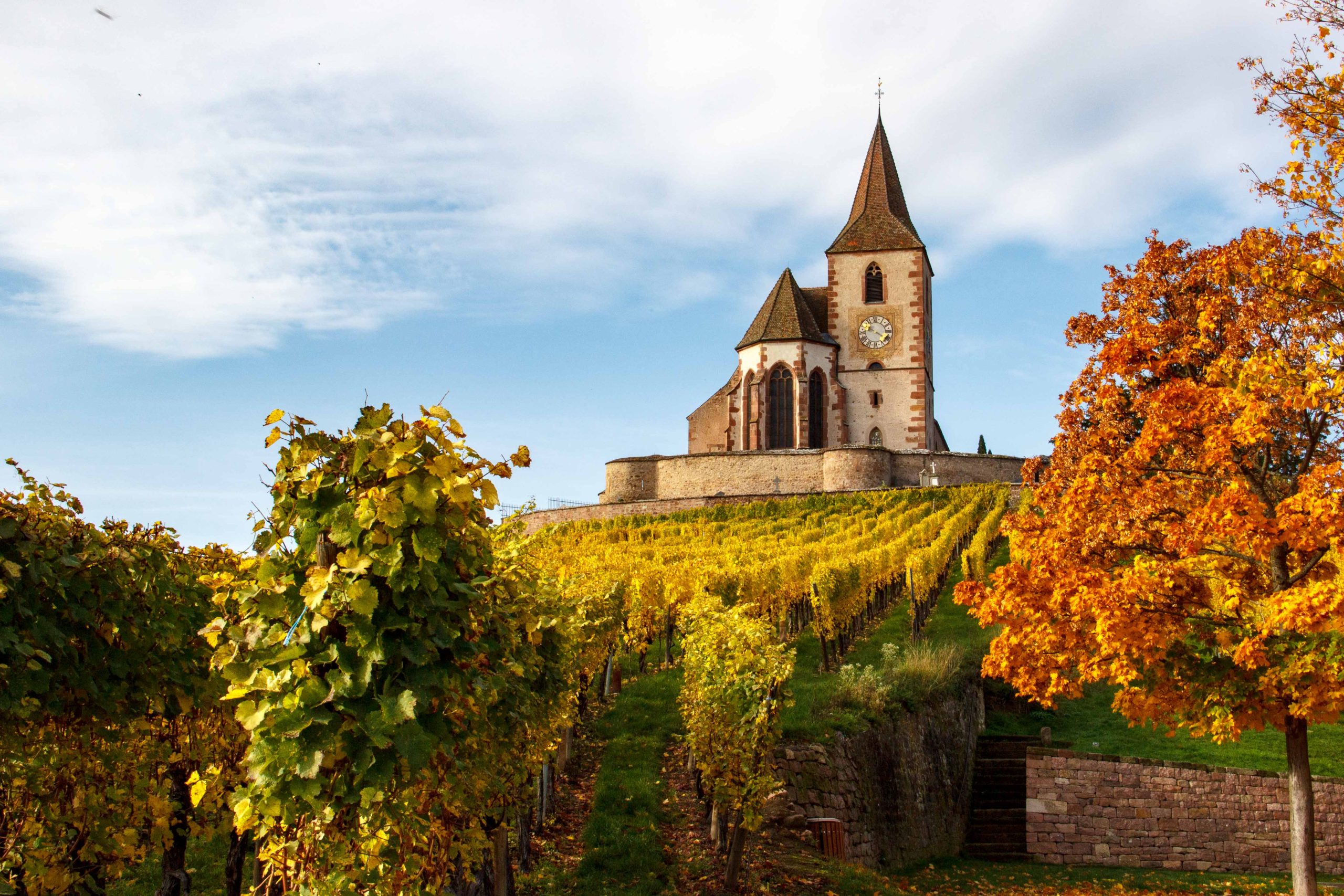The tenth largest wine region in France has its own rules. About 90% of the wines produced here are white, according to the best German tradition that is well felt in the Alsace region. The local dialect, Alsatian, is French with significant influences from neighboring Germany and Switzerland. Even the local cuisine includes German elements such as sausages and sauerkraut.
The wines in Alsace usually consist of one main grape variety and, unlike in most of France, here it is customary to indicate the name of the grape variety on the front label of the wine.
The appellation’s great wines are produced from Riesling, Gewürztraminer, Pinot Gris and Muscat grapes, the Four Noble Varieties of Alsace. The Muscat grapes that grow in the area often produce dry wines, with aromas of honey, and are well worth a try.
Alsace wines are usually not aged in oak barriques. At most, they would be aged in large, old barrels, or foudres, which do not lend aromas of wood that may hide the pure taste of the grapes and the local terroir.
Pinot Noir is the only red grape variety permitted to be grown in the Alsace appellation and is the source of red wines with high acidity and light color. Although its fine red wines are produced in the region, Alsace’s reputation as a white wine region, combined with the prominence of Burgundy’s Pinot Noir, tends to shield these wines from view.
In addition to varietal white wines, fine sparkling wines have been produced in Alsace for over a century using the traditional method, similar to the Champagne region. Here the wines are called Crémant d’Alsace and they make up 22% of the region’s wines. Close to 40 million bottles a year of Crémant, of high quality and at pocket-friendly prices, have made the sparkling wines of Alsace the well-kept secret of bubbly lovers.


The Grand Cru of Alsace
In France, well-known and renowned vineyards are called Lieu-dit, only some of which are included in the Grand Cru lists. Prices for wines from these plots are usually higher than those sourced from unnamed vineyards, but do not come close to the cost of the Grand Crus.
The Alsace vineyards designated Grand Cru are planted in what is regarded as the best terroir. The region boasts 51 Grand Cru vineyards and their Lieux-dits are proudly displayed on the wine label. These vineyards represent just 4% of the area’s output, with strict rules in a French-German approach. The yields are low and only the region’s four noble grape varieties are grown there.
The “short” history of the Grand Cru vineyards in Alsace begins in the middle of the first millennium, when some of the vineyards we know today were already marked and defined. Dagobert, for example, the heir to the throne, gave the vineyard Steinklotz to the Haslach abbey in the year 613. The Vorbourg vineyard supported the Archbishop of Strasbourg in as early as 762, and the Mambourg vineyard is mentioned in AD 783.
Not everyone agrees on the identity of the Grand Cru vineyards though, and there are wineries, such as Hugel & Fils, who have decided to avoid labeling their Grand Cru wines as such.
The Tokaji of Alsace
Those who delve into the history of aged wines may find bottles with the inscription Tokay d’Alsace. Pinot Gris was introduced to the area in the 16th century, and to increase its prestige (and price) Tokaj was added to the name of the wines.
European Union laws have recently brought order to the use of well-known names that have great commercial value. It was decided that the appellation Tokaj would be reserved exclusively for wines coming from the region with that name in Hungary (and to a lesser extent in Croatia). Starting with the 2007 harvest, the local producers abandoned the designation Tokay and currently use only the name of the variety.
On the other side of the scale, there are the simple wines of the Alsace region. Blended from the appellation’s permitted white varieties, these light, refreshing wines with medium acidity and aromas of fruits and flowers are labeled as Edelzwicker or Gentil, depending on the blend.
The most beautiful Wine Region in France
The Alsace wine region, at the foot of the Vosges Mountains, is considered one of the most beautiful in France, with picturesque villages and a combination of French culture with a German influence. The mountain range creates a natural obstacle, which makes the area relatively dry from rains.
Average temperatures reach 20 degrees in summer and 3 degrees in winter, so it is pleasant to travel in the area from May to October. If you are looking for a good opportunity to drink an excellent brandy in a snowy environment, you should come to Alsace in winter and enjoy the excellent Marc d’Alsace.
In addition, the area produces small and fine distillates of fruits such as apples, pears, various berries and dozens of other diverse raw materials; in the best German tradition (did anybody say Schnapps?). One of the best distilleries in the area is Metté, where you will discover 74 (!) various distillates and a lovely hospitality experience.
The Delicacies of Local Cuisine
The local cuisine is one of the best in France and you can find dozens of restaurants in the area that appear in the coveted Michelin restaurant guide, alongside many small and hidden home restaurants that are also worth visiting.
Along with the traditional chocolate and sauerkraut, the locals specialize in smoked meat (mainly pork), foie gras, and a local version of chicken in wine (coq au vin) that is cooked for a long time in Alsatian Riesling.
A famous dish that is not to be missed when you come to the area is the Tarte Flambée, also known by its German name Flammkuchen. Thinly rolled dough is topped with cheese and vegetables and undergoes a short and quick bake of about 2 minutes in a traditional wood oven. Just don’t you dare call it pizza by mistake! In a traditional local restaurant, different types of tarte flambée are served to the center of the table, one after the other, until the diners ask to stop.
Wine, food, views, lovely hospitality, and many others, are the reasons to visit Alsace, now all that remains is to decide when!



